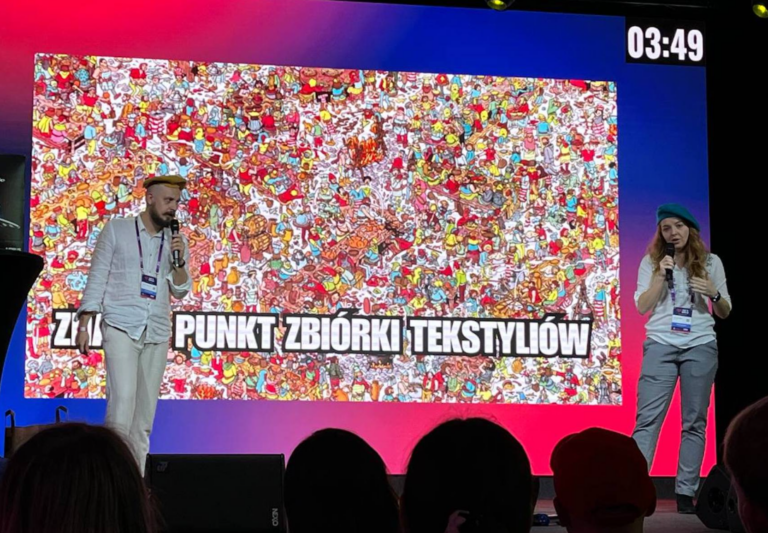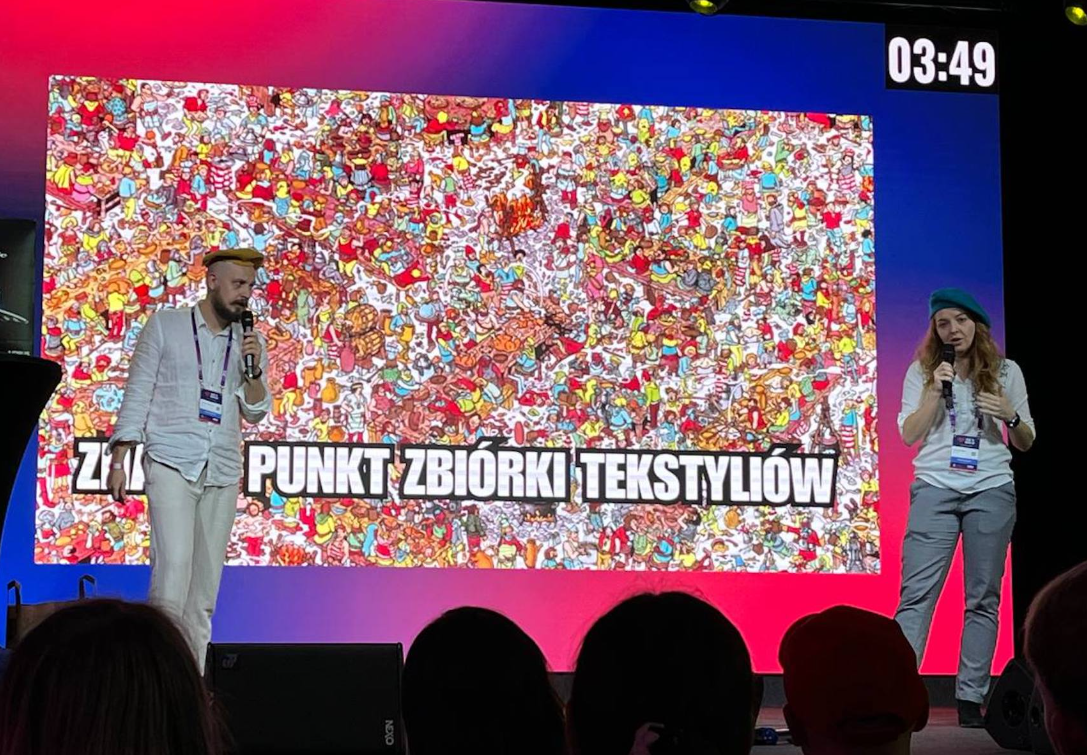Rzut Beretem (rzutberetem.eco) to mapa, dzięki której każdy, kto ma zbędne ubrania, może w łatwy sposób znaleźć kontener, do którego może je wrzucić i w ten sposób dać im szansę na drugie życie. Pokazuje, gdzie można zanieść tekstylia domowe, odzież, buty, a także dzieli je na te dobre i zużyte. Dzięki temu każdy użytkownik szybko może dowiedzieć się, gdzie takie miejsce jest w jego okolicy.
“Zależy nam na tym, żeby te wszystkie rzeczy nie lądowały na składowisku, a mogły trafić do drugiego obiegu m.in. do sortowni, second handów czy potrzebujących osób. Nasza aplikacja to pierwszy podstawowy krok w tym kierunku.”
Agnieszka Franus, z fundacji Problematy, rozwijającej aplikację Rzut Beretem
Wygodna wyszukiwarka i wiarygodne dane
Rzut Beretem jest aplikacją webową, na którą wchodzi się z przeglądarki internetowej. Jak twierdzą jego twórcy, dotychczas nie było w planach aplikacji mobilnej, ale użytkownicy czasami o nią pytają. Jednak w przypadku każdego NGO, wiele zależy od dostępnych funduszy.
“Aby stworzyć aplikacje na smartfony i wprowadzić kolejne funkcjonalności musimy najpierw pozyskać fundusze. Działamy oddolnie i aktualnie szukamy partnerów do współpracy, którzy chcieliby wesprzeć nasz projekt.”
Agnieszka Franus
Fundacja Problematy ma także konto na Patronite, gdzie każdy, kto wspiera jej misję może wpłacić symboliczne 5 złotych.
Nie wolno wyrzucać starych ubrań do kosza na śmieci
Pomysł na Rzut Beretem powstał około trzech lat temu, jednak pełne wdrożenie tego projektu nastąpiło dopiero w ubiegłym roku. W szybkim rozwoju przedsięwzięcia pomogła obecność w akceleratorze InQube. Teraz pomogą w tym dodatkowo przepisy, które nie pozwalają wrzucać niepotrzebnych tekstyliów do pojemników na zmieszane odpady. Stamtąd automatycznie lądowały albo na składowisku albo były spalane.
“Wiele z tych rzeczy można wykorzystać w inny sposób np. koszulki bawełniane jako czyściwo. Nawet dziurawa skarpeta nie jest odpadem, a może się jeszcze do czegoś przydać.”
Agnieszka Franus
Większość z punktów znajdujących się w aplikacji Rzut Beretem to kontenery, które wolontariusze sprawdzają sami na miejscu.
“Sami chodzimy po miastach i nanosimy je na mapę. Dzięki temu mamy pewność, że ich lokalizacja na mapie jest dokładna.”
Agnieszka Franus
Jak twierdzi Agnieszka Franus często sami właściciele udostępniają listę swoich kontenerów, jednak nie zawsze wiadomo, czy stoją one na podwórku, parkingu, czy obok bramy.
Potrzebne fundusze na rozwój aplikacji
Rzut Beretem nie czerpie zysków ze swojej działalności, jednak zależy mu na pozyskaniu funduszy na dalszy rozwój.
“Nie pobieramy opłat za dodanie punktu zbiórki tekstyliów czy jego wyróżnienie. Nie może być tak, że punkty firmy X są reklamowane, bo nam zapłaciła. Przede wszystkim nasi odbiorcy to ludzie, którzy chcą oddać tekstylia w wyznaczone miejsca.”
Agnieszka Franus
Według Agnieszki Franus nie może być tak, że firma, która zbierane rzeczy i bezmyślnie eksportuje do Afryki i nie ma przejrzystości działania, będzie lepiej promowana w aplikacji tylko dlatego, że za to zapłaciła.
“Jesteśmy niezależni. Mamy nadzieję, że dzięki temu dajemy większą wartość użytkownikom.”
Agnieszka Franus
Wrocławianie nie będą mieli problemu ze znalezieniem kontenera
Aktualnie najwięcej punktów w aplikacji zlokalizowanych jest na Dolnym Śląsku, zwłaszcza we Wrocławiu, bo tu Fundacja Problematy ma najwięcej kontaktów i wolontariuszy. Dużo jest też ze Śląska oraz Trójmiasta. Jednak celem jest dokładne zmapowanie całej Polski.Od tego roku znacznie wzrosła liczba użytkowników tej aplikacji. Wiele wskazuje na to, że będzie ich coraz więcej w związku z wejściem w życie nowych przepisów. Jak zapowiada Agnieszka Franus, Rzut Beretem już niedługo zyska więcej funkcjonalności i na pewno w dalszym ciągu będzie się rozwijać.





